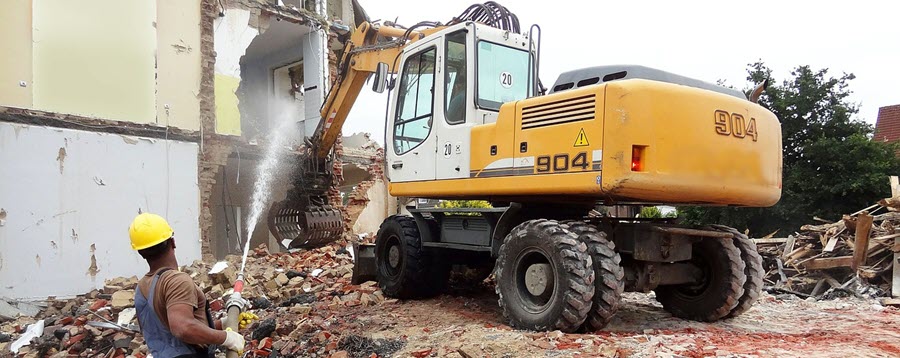
How to Reduce the Health Risks of Dust and Debris on Construction Sites

Workplace dust and debris is part of the job description for most construction workers. They’re constantly exposed to it. While most project managers and state laws regulate protective gear and precautionary measures, workers can still suffer adverse health effects from these particulates.
Regular exposure to construction dust — which can contain metals, silica, asbestos and other toxic substances — can cause any number of health issues. Complications may include asthma, COPD, silicosis and even lung cancer.
In most cases, these diseases take a long time to develop and become apparent. Therefore, it’s imperative site managers reduce exposure to harmful debris on an everyday basis. Luckily, there are several ways they can mitigate risk.
1. Water the Site
One of the cheapest ways to minimize dust on outdoor sites is to spray down the area with water before teams get to work. Site managers can utilize a water truck to wet haul roads and other places that see a lot of traffic during construction. While this method is effective, teams may have to respray sites depending on the weather, temperature and location. Moreover, excessive watering could cause on-site erosion.
2. Apply Polymers
Another excellent way to control dust is to apply polymers to topsoil before spraying the area with water. This method is only effective in places that don’t experience vehicle travel, like hillsides. However, it does allow teams to minimize dust and debris as the polymers bind to each other to create a seal.
This chemical binding eliminates the need to constantly saturate the earth with water. Before applying this method, teams should ensure state law permits polymer use on construction sites.
3. Make a Barrier
In terms of indoor construction, teams likely won’t be able to spray down the area with water or apply polymers. Instead, they must rely on physical barriers to separate themselves from dust and debris. Teams may build barricades, tape down specific areas and use dust collectors to prevent accumulation.
Once personnel are inside the room or building, the team should post signs limiting access. This will prevent dust from escaping and unprotected workers from entering.
4. Wear PPE
Personal protective equipment can also act as a barrier between workers and the dust and debris of jobsites. Typically, this includes gloves, hardhats, goggles, masks and a variety of other protective gear. Employees should wear PPE whenever they’re working in a potentially hazardous environment.
The most effective PPE for dust and debris are dust masks and respirators. Employers must make sure workers receive a medical exam to ensure proper fitting and usage before exposure to dust. A correctly worn respirator can guard workers against particulates, allergens and even vapors and gases — depending on the mask’s filtration.
As technology advances, smart clothing is also becoming more popular on worksites. These materials can detect CO2 levels, as well as monitor breath, heart rate and more to ensure workers stay healthy on the job.
5. Use Remote-Controlled Equipment
Some companies are already using drones at their worksites. This technology allows workers to observe hazardous areas without entering them or emitting more dust and debris.
However, other remote controlled-vehicles also let employees construct remotely. Some are controlled with line-of-sight operation, while others are deployed from an off-site location. They mitigate risk and still manage to be incredibly efficient, if not more so than a physical team.
6. Control and Ventilate
If the buildup of dust at a worksite is inevitable — like inside a room or building — be sure to handle it properly. Use partition walls in larger work areas and wait to clean up until employees finish the job. These protective measures will help prevent the debris from spreading. Industrial vacuums are another good tool for controlling hazardous dust.
In smaller, more contained areas, use a ventilation system to bring in fresh, clean air and extract airborne dust and fumes. Doing this will ensure dust concentrations don’t get too high while also minimizing the risk of carbon monoxide poisoning.
Investing in a Healthy Team
It’s crucial companies and site managers ensure the safety of their employees. By taking measures to prevent dust and debris-related illnesses and deaths, the construction industry can keep workers healthy and prevent delays that can derail entire projects.

